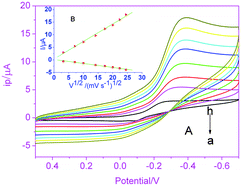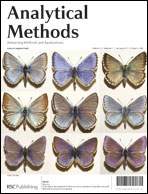A novel hydrogen peroxide biosensor has been fabricated based on Hb entrapped poly(vinyl alcohol) (PVA)/Titanium dioxide (TiO2) hybrid material. Multi-walled carbon nanotubes (MWCNTs) were then dispersed into the composite matrix. It was found that such hybrid material could retain the native biocatalytic activity of the entrapped Hb by electrochemical experiments. In addition, MWCNTs enhanced catalytic performance of hydrogen peroxide and promoted electronic transfer. Effects of some experimental variables such as the amount of MWCNTs, concentration of enzyme, amounts of modifier on the current response of the biosensor were investigated. A linear calibration graph was obtained in the concentration range of H2O2 from 0.5 to 2.7 μM (linear regression coefficient = 0.997) with a detection limit of 0.01 μM (S/N = 3). The apparent Michaelis–Menten constant Km was 0.997 μM. The biosensor displayed excellent repeatability, high sensitivity, long-term stability, and good selectivity. The recovery of H2O2 in samples was testified with satisfactory results.

You have access to this article
 Please wait while we load your content...
Something went wrong. Try again?
Please wait while we load your content...
Something went wrong. Try again?


 Please wait while we load your content...
Please wait while we load your content...